First 5 production planes with AM-34FRN and ATsN-2 system
The preparation for the series production started in 1937, but it was completed only in 1939. In the meanwhile, the interest of the supreme military authorities for long range and long altitude strategic bombers had cooled in favour of tactical aircrafts, also because of the obvious obsolescence of the costly fleet of TB-3s built in early '30s.
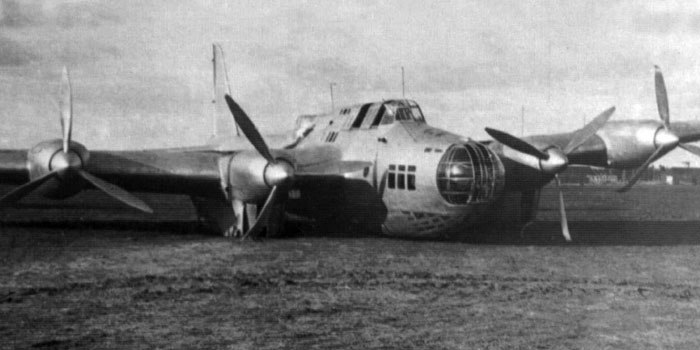
TB-7 s/n 4211 was the first production plane, first of four equipped with the AM-34FRN and ATsN-2 system.
Plane n.4211, flown by colonel Gromov, and 4216, were intended to be shown at the parade of May 1st 1940, but the landing gear of the first one failed while landing at the Air Force Institute of Shchelkovo on the morning of April 30th . So, only plane n.4216 was shown on that parade.
After this debut, the first six TB-7 were delivered to the 14th TBAP, based at the Borispol airport near Kiev.

TsIAM, charged to build the ATsN-2 supercharging system, delivered only six units, two for the prototypes and four for production planes, then refused to build any more.
Reducing the ceiling, the lack of supercharging system damaged the original concept of the high-altitude bomber. Besides, there were delivery problems with the AM-34FRNV engines built in Zavod.24.
The production of the plane was halted in early 1940, after having completed four production planes only with AM-34FRN and ATsN-2, while two further planes were completed with AM-35 without supercharging system. Six further airframes were left without engines.
Below, we see three photos of an early TB-7 with the auxiliary compressor in the fuselage. The exhaust pipes of its engine are visble on both sides.



Images from http://scalemodels.ru/modules/forum/viewtopic_t_3492_start_800.html
Production planes with diesel engines M-30 and M-40
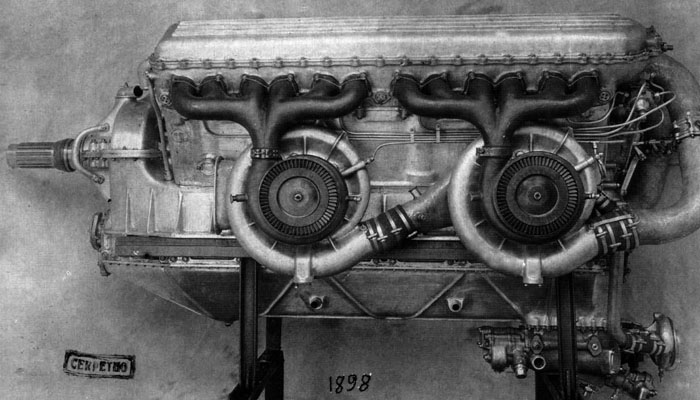
The People's Commissariat of the Aircraft Industry ordered to dismantle the building facilities for TB-7 in favour of the production of PS-84, but the Air Force and technicians objected that such a bomber was needed. So, the Comissariat changed his mind in May and permitted to continue the production of the plane, but with new Diesel engines.
The diesel engine M-30 was equipped with 4 turbo-superchargers, and in early 1940 was the largest engine in its class. It was produced in small number in early 1940 at Zavod.82, but it was soon put out out of production because of troubles.
Just before the war it was perfectioned and put again in production as M-40, and then the M-40F, differing mainly for the turbo-superchargers dimensions and number. The engines were somewhat troublesome.
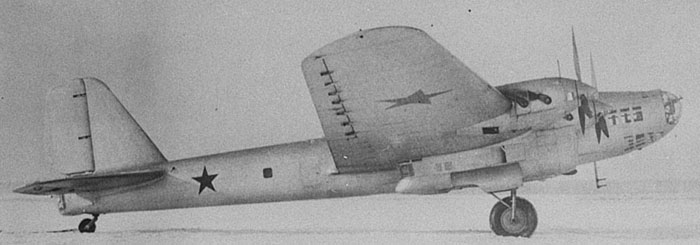
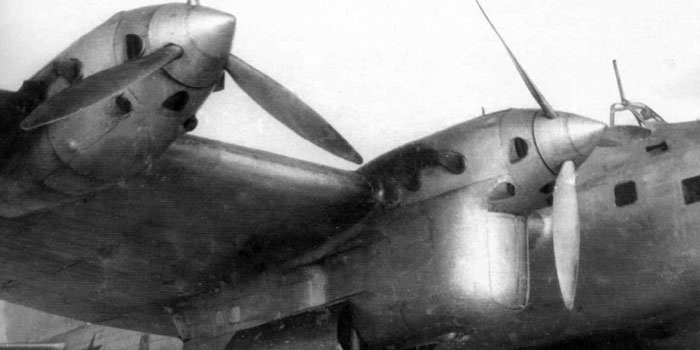
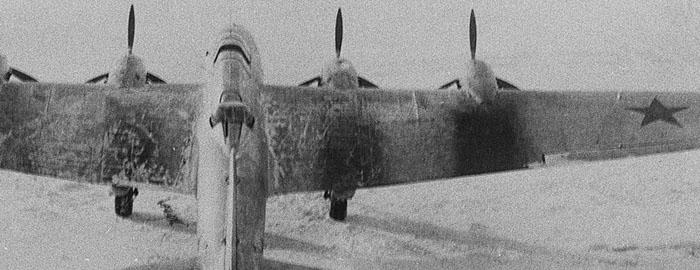
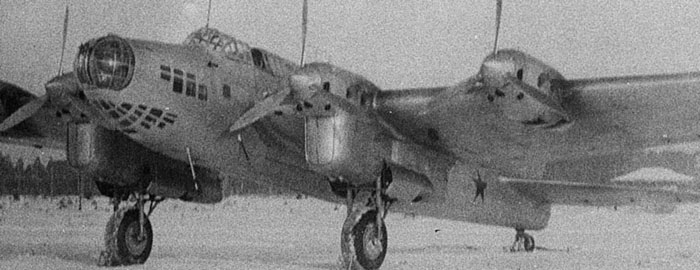
The first TB-7 to receive the M-40 diesel engine and VISh-24 propellers was the s/n 4225 at the end of 1940, that was tested with relative subcess in early 1941, flown by test pilot G.F. Baidukov.
A second plane, s/n 4227, was then tested with M-30 diesel engines, soon renamed ACh-30B after their designer Charomskii.
The factory installed many diesel engines on TB-7 all over the 1941, aside the less powerful and more thirsty, but more reliable, AM-35A.
Diesel engines had a lower consumption of fuel, and the range of diesel-engined TB-7 was 5460 km with 2000 kg payload, while the planes with AM-35A had a range of 3600 km only; on the other hand, the Mikulin engines were much more reliable, particularly in winter.
M-40 diesel engine
a report on the tests of this plane is here http://heavybomber.narod.ru/4225.htm
Production planes with AM-35A engines


More successful was the fate of aircraft engines AM-35A.
The first plane s/n 42015 was prepared in late 1940; after a short test at the factory, the plane was sent for trial in the State Research Institute of the Air Force that began March 28, 1941.
The first phase of testing in the bomber version was completed on June 25, 1941 (on the fourth day after the beginning of the war).
Tests crew consisting of the first pilot Lisitsyn, flight engineer Panyushkin, second pilot Kostyuk, et other members.
The photos on the left depict the TB-7 n.42015 at state tests in spring 1941.
According to the standards of aircraft paining between May 1940 and June 1941, the plane was painted with all the upper and side surfaces in gloss yellowish green A-19f and with undersurfaces painted with glossy light blue-grey A-18f.
The red stars were positioned according to the prewar standards: fuselage sides, wing undersurfaces and uppersurfaces; it's unclear if they had a thin black outline.
The prop blades were unpainted, apart for the rear face that was only partially painted black.
http://crimso.msk.ru/Images6/AV/AV08-5/21-1.jpg
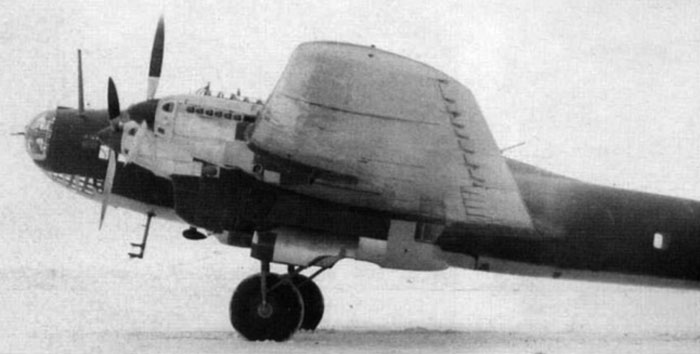
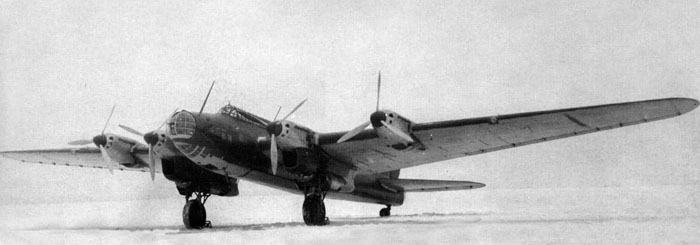
Two images of TB-3 4AM-35A s/n 4224, still with unpainted cowlings and without any marking.
Note the prewar style of painting of propellers, that were left unpainted on the front face, and partially painted black on the rear face only.
In total, Zavod 124 produced 20 planes up to the end of 1940:
- first prototype, with AM-34FRN + M-100
- second prototype, AM-34FRNV + M-100A
- 4 production planes with AM-34FRNV + M-100A
- 1 with M-30,
- 1 with M-40,
- 9 with AM-35,
- 3 with AM-35A.
Seven further machines were delivered in the first half of 1941 before the war outbreak, not all combat ready.

The most of TB-7s were delivered to the 14th TBAP (heavy bomber air regiment), that was not operational at the beginning of the war.
9 planes on 12 assigned to that unit had diesel engines.
Plane s/n 4216, the first one received by the regiment, crashed in december 1940 and was badly damaged.